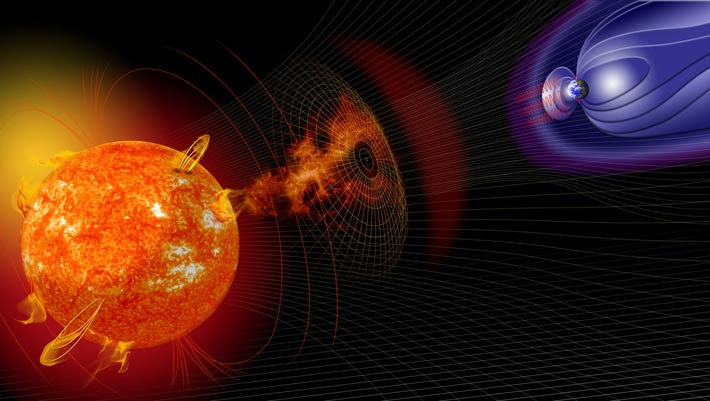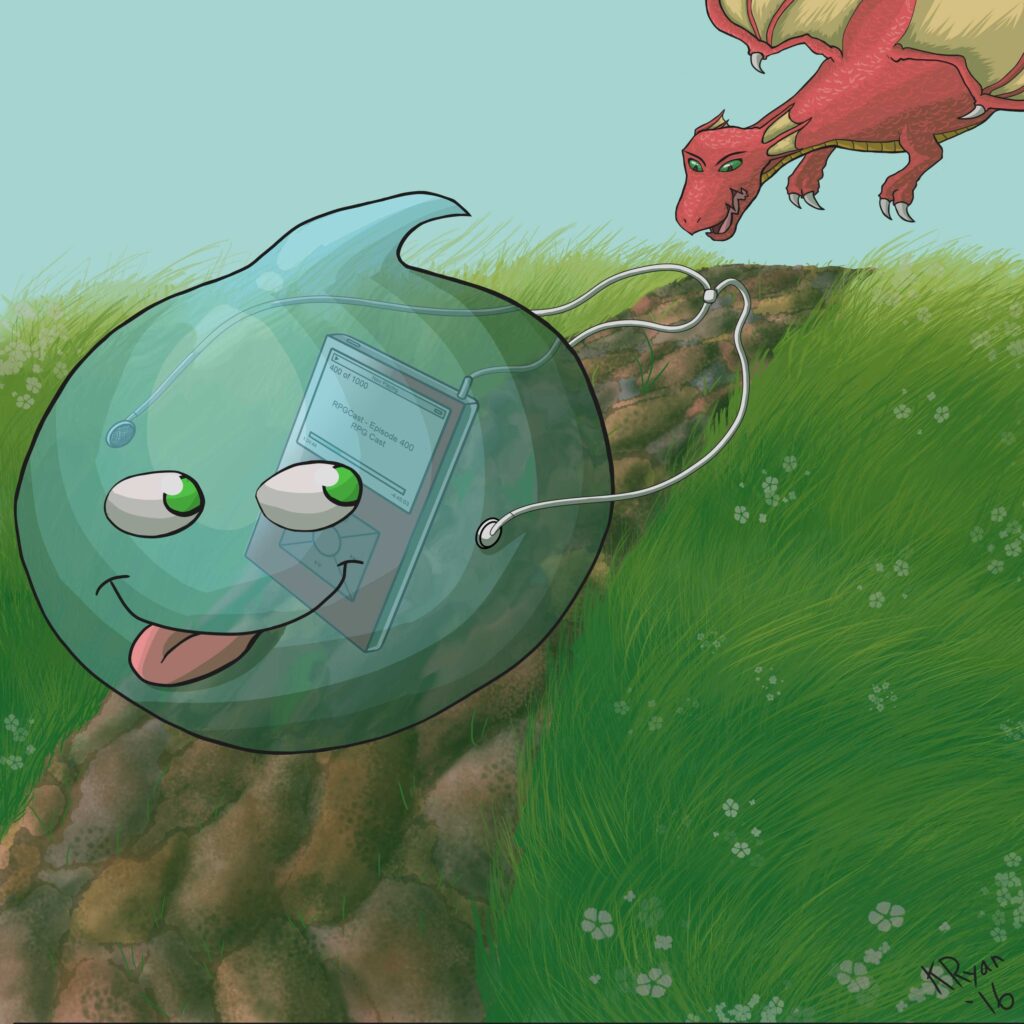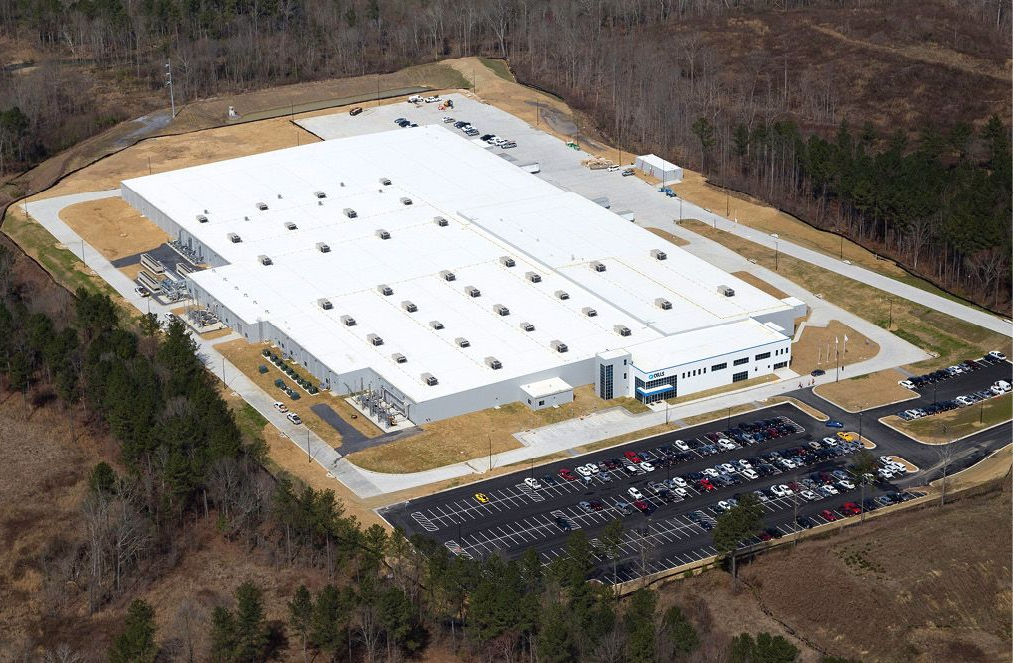The Sun rarely produced extreme solar particle events, orders of magnitude stronger than everything directly observed. Their enormous power can greatly distort the production of cosmogenic isotopes, e.g., radiocarbon (14C), in the terrestrial system, leaving clear signatures in natural terrestrial archives including dateable tree rings. Eight such events were known to occur during the past 12,000 years, with the strongest one being that of 775 CE. Recently, a new extreme solar particle event candidate has been discovered as the largest known radiocarbon peak dated to 12350 BCE. New research shows that this event was stronger by 18% than the 775 CE event and likely occurred between January and April 12350 BCE, with the most probable date in early March.
An artist’s illustration of a solar storm. Image credit: NASA.
“Solar particle storms can greatly enhance the normal production of cosmogenic isotopes like radiocarbon in the atmosphere by galactic cosmic rays,” said University of Oulu postdoctoral researcher Kseniia Golubenko and her colleagues.
“Such enhanced production, preserved in annual tree rings, serves as a clear cosmic timestamp making possible absolute dating of tree samples.”
“Such dramatic spikes — known as Miyake events, named after the Japanese researcher who first discovered them — offer invaluable data for scientists studying solar activity, ancient Earth systems and space climate.”
“Miyake events allow us to pin down exact calendar years in floating archaeological chronologies,” added University of Oulu’s Professor Ilya Usoskin.
“Radiocarbon signals from such events have already enabled researchers to precisely date Viking settlements in Newfoundland and Neolithic communities in Greece.”
To reconstruct solar particle storms under ancient glacial climate conditions, the authors developed and used a new chemistry-climate model called SOCOL:14C-Ex.
The model was successfully validated using data in tree rings from the 775 CE event and applied to the Ice Age conditions to study the 12350 BCE event.
“The ancient event in 12350 BCE is the only known extreme solar particle event outside of the Holocene epoch, the past 12,000 years of stable warm climate,” Dr. Golubenko said.
“Compared to the largest event of the modern satellite era — the 2005 particle storm — the ancient event was over 500 times more intense, according to our estimates.”
“Other large known solar particle storms have occurred around 994 CE, 663 BCE, 5259 BCE and 7176 BCE, and a few other candidates are under investigation.”
“The 12350 BCE event also establishes a new worst-case scenario,” she added.
“Understanding its scale is critical for evaluating the risks posed by future solar storms to modern infrastructure like satellites, power grids, and communication systems.”
The team’s paper was published in the journal Earth and Planetary Science Letters.
_____
Kseniia Golubenko et al. 2025. New SOCOL:14C-Ex model reveals that the Late-Glacial radiocarbon spike in 12350 BC was caused by the record-strong extreme solar storm. Earth and Planetary Science Letters 661: 119383; doi: 10.1016/j.epsl.2025.119383
https://www.sci.news/astronomy/strongest-miyake-event-13911.html





